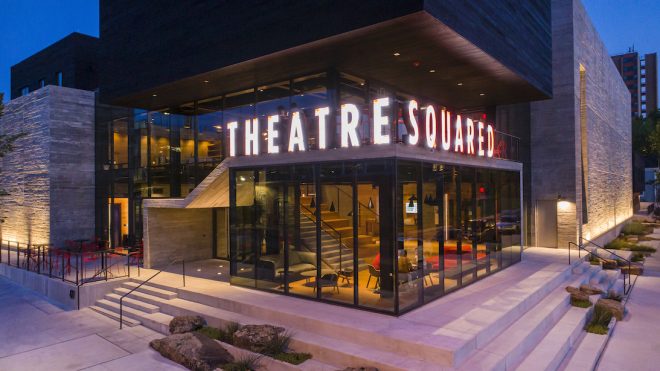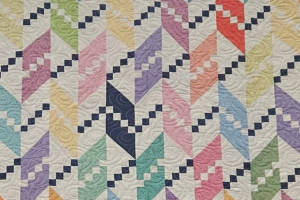LIGHTS UP

A whole new world at TheatreSquared doesn’t happen overnight.
WORDS / JULIA M. TRUPP
PHOTO COURTESY / THEATRESQUARED
There’s something mystical about stepping foot into TheatreSquared in Fayetteville. We leave everything at the door and become immersed in another world conjured by the performance, the glimmering lights and the fantastical costumes. But just as much magic happens offstage as on.
Take their latest production Ann, for example. The design crew built looming plantation shutters from scratch to set the scene. While many set pieces can be found at Habitat For Humanity and flea markets, some can only be made in-house.
“Basically at the beginning of the season, Kat [Wepler] makes a plan for how all of the things will go onstage all year long,” says Joanna Bell, marketing director for TheatreSquared. “The designers design, and then Alex [Worthington] executes the designs for each show.”
Ann is an unusual case, as the play itself is a one-woman-production. So while there aren’t necessarily too many moving bodies on stage and no set changes, the design relies heavily on projection technology to guide the audience through the play’s three parts.
“This is the first time I’ve ever had experience with projection mapping,” says Ashleigh Burns, a projection designer for Ann and TheatreSquared’s scenic charge and props artist. “The play is split up into three parts, and the projections help guide you through each part. So they help her journey, and we won’t be doing projections constantly like some shows. They’re really just aiding those transitions to make it clear for the audience because we don’t have any scenery that comes on or off. We’re just sort of shaping the world with light, sound, and projections.”
Burns works full-time for TheatreSquared, but most other productions curate talent from out-of-house, except for the costume designer. Production Director Kat Wepler likes to find a blend of personalities who would fit the show well, so forming a successful production crew is its own kind of casting process. “We think of who our first choices are, and sometimes the director wants to talk to people about reading the script, or if they think they will match artistically. It really just depends and the process is different on each show.”
The initial planning and development meeting typically begins six months out from the show, so for Ann, the team began processing and reading through the script after A Christmas Carol opened last November. The show has since been extended to April 19, so they get to work with the shutters longer than they expected.
“Hand-making the plantation shutters was a challenge,” says Technical Director Alex Worthington. “I don’t think it’s something theaters do very often; that’s a product that you buy and install. It was one that we embraced, and it was a labor of love because there is a lot of planning going into making sure those things function well before tech, and being able to lay that entire project out. That became the scene shop’s job for three weeks.”
Most shows have about four weeks to get set up, including tech week. Because the show only has one actor (and she, the wonderful Sally Edmundson, has done the show before), the team had less than three weeks to get it all together—and they did. The shutters are almost fully functional, but they don’t have to hold up through years of children opening and closing them like actual plantation shutters would.
“Instead we do scenic gesture tricks, we make things look like they’re real,” Worthington says.
And at the end of every show, all the clever tricks, time, sweat and tears absorbed into each set piece, prop and cue is reset—a clean slate for the next show, already in the design phase and ready to come to life.
/ THEATRE2.ORG





Comments